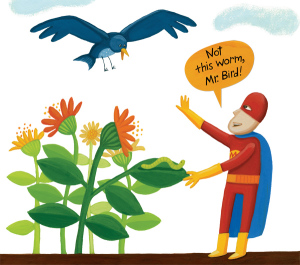THE NIGHT BEFORE HANUKKAH by Natasha Wing, illustrated by Amy Wummer
HANUKKAH – the Festival of Lights, eight wonderful days of families celebrating that miracles do happen. Sometimes the miracle of today is found in the unselfish act of giving. In Natasha Wing’s rhyming introduction to this special Jewish holiday, a little girl contributes the perfect solution to a missing eighth candle. THE NIGHT BEFORE HANUKKAH captures the fun spirit of the traditional aspects of this ancient holiday while weaving in a contemporary setting – plus a good sprinkling of humor. Family interactions are the heart of this book. Sharing and giving to others is the soul.
THE DREIDEL THAT WOULDN’T SPIN, a Toyshop Tale of Hanukkah by Martha Seif Simpson and illustrated by Durga Yael Bernhard is a very different presentation of Hanukkah and a wonderful companion to Natasha Wing’s modern version. In Martha Simpson’s story-telling voice the reader is introduced to a mysterious peddler and a greedy shopkeeper. The peddler has a very special spinning top, a dreidel, carved from the finest wood and hand-painted with golden glistening colors. The shopkeeper is eager to have it and then sell it for a handsome price. But a terrible problem emerges. The top won’t spin. It wasn’t broken. It was a perfect dreidel with magical letters, but it would not spin until one day, a small miracle happened, “Nes katan hayah poh,” right in front of the shopkeeper, right after a small boy with little money, gave the precious dreidel a spinning twist. Perhaps this books brings to each reader a bit of a miracle as well, for miracles are never bought, they happen…sometimes when a book is shared, or a bit of chocolate, or time.
We invite you to leave a comment about a favorite book you like to share with a child during this holiday season, a season of remembering what is truly precious. And don’t forget to enter for a chance to win a copy of THE NIGHT BEFORE HANUKKAH and THE DREIDEL THAT WOULDN’T SPIN! Please email us at readerkiz (at) readerkidz (dot) com. Be sure to put HANUKKAH BOOK GIVEAWAY in the subject line.
Congratulations to Dyann Campbell, winner of the HANUKKAH BOOK GIVEAWAY. A second two-book giveaway is on its way to Linda Seibold. Thanks for stopping by ReaderKidZ!












 what you’re looking for. Whether it be Sebastian – who gathers “all the things he would ever need,” before boarding a balloon of patchwork quilts and afghans, or Jonathan – who climbs aboard a big blue boat in search of his favorite stuffed animal, the premise of both books – a search for something mysterious and elusive and just on the other side of a milky gray fog or a stormy sea – is timeless. The journeys are wild, imaginative, and delightfully charming, thereby encouraging readers to slow down to savor the beautifully rendered scenes. Whimsical and inviting, Stead’s books capture the magic of childhood in a way few have. Learn more about Philip Stead and his books at his
what you’re looking for. Whether it be Sebastian – who gathers “all the things he would ever need,” before boarding a balloon of patchwork quilts and afghans, or Jonathan – who climbs aboard a big blue boat in search of his favorite stuffed animal, the premise of both books – a search for something mysterious and elusive and just on the other side of a milky gray fog or a stormy sea – is timeless. The journeys are wild, imaginative, and delightfully charming, thereby encouraging readers to slow down to savor the beautifully rendered scenes. Whimsical and inviting, Stead’s books capture the magic of childhood in a way few have. Learn more about Philip Stead and his books at his 

